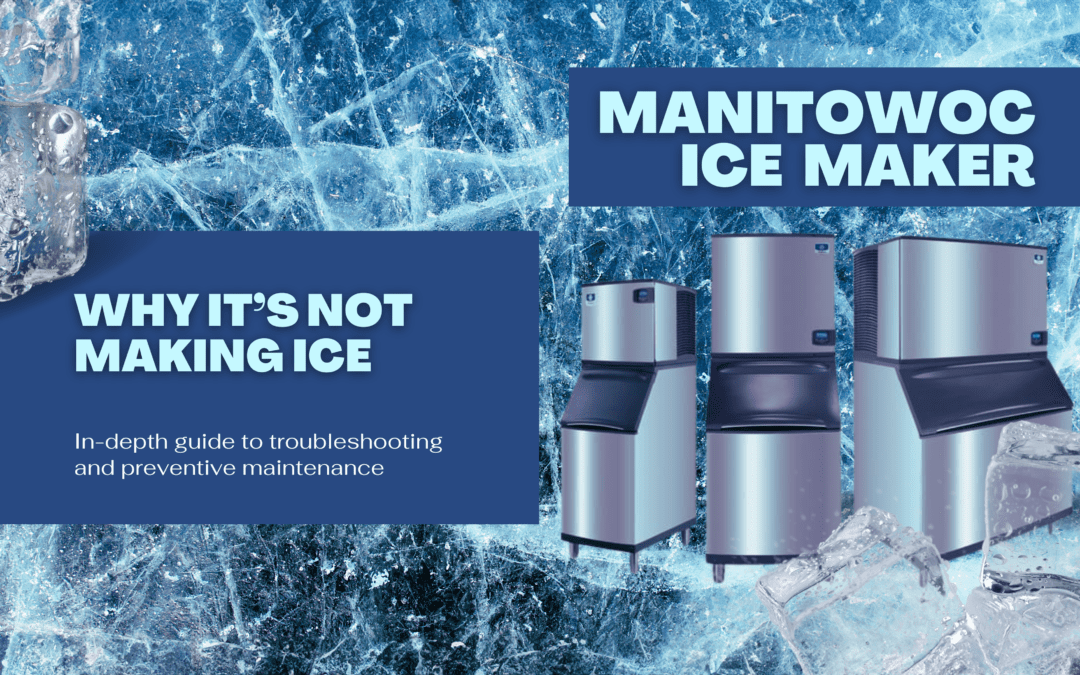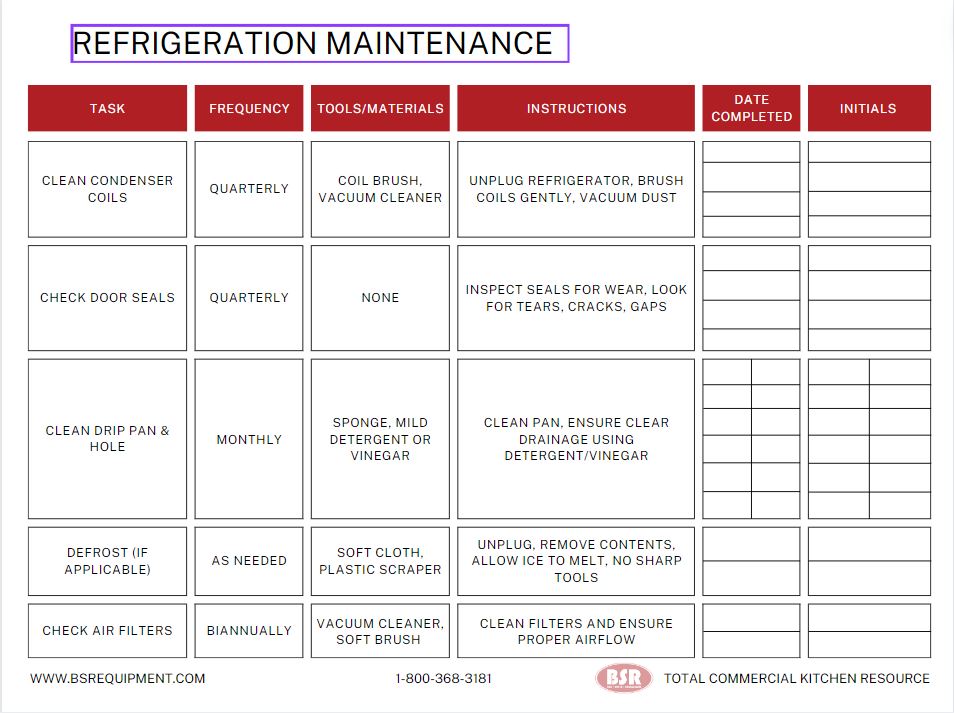Introduction
Navigating through the chilly waters of ice machine maintenance? If your Manitowoc ice maker is giving you the cold shoulder by not producing ice, you’re in the right place. This guide is packed with insights from the ultimate troubleshooting manual, ensuring your machine gets back to its ice-making glory in no time.
Safety First: Unplug Your Manitowoc Ice Machine
Understanding Manitowoc Ice Machines
Common Issues and Solutions
Actionable Solutions: First, make sure your ice machine is securely plugged into a functioning power outlet. If there’s no power, inspect your establishment’s circuit breaker or fuse box for any tripped breakers or blown fuses and reset or replace them as necessary. For water supply, check the inlet valve and ensure it’s free from any blockages or clogs, and verify that the water line is not kinked or frozen, which could restrict the flow to your machine.
Water Filter Maintenance
Actionable Solutions: A dirty or clogged water filter can significantly impact your machine’s ice production. Locate your machine’s water filter, typically found on the incoming water line, and check the manufacturer’s guidelines for replacement intervals. If it’s time, replace the filter with a Manitowoc-approved model to ensure optimal water flow and cleanliness.
Evaporator Plate Cleaning
Actionable Solutions: The evaporator plate is essential for ice formation and must be kept clean and free of scale buildup. Turn off and unplug the machine for safety, then use a Manitowoc-approved nickel-safe cleaner to gently clean the plate according to the product instructions. Rinse thoroughly with clean water and dry before turning the machine back on.
Resetting the Machine
Actionable Solutions: If your machine is experiencing minor electronic glitches, a reset might be the quick fix you need. Safely unplug your machine and wait for about 10 seconds. Reconnect the power and turn on the machine using the power switch. A successful reset is often indicated by a blue light or the initiation of a standard start-up sequence.
Sensor and Control Board Inspection
Actionable Solutions: Dirty or malfunctioning sensors can lead to ice production issues. Carefully clean all machine sensors with a soft, damp cloth to remove any dirt or buildup. For the control board, visually inspect for any signs of damage or loose connections. If you’re uncomfortable handling electrical components or if damage is evident, it’s best to consult with a professional technician for repairs.
Condenser Maintenance
Actionable Solutions: A clean condenser is crucial for efficient machine operation. Turn off and unplug the machine, then use a soft brush or vacuum with a brush attachment to gently clean the condenser fins, being careful not to bend them. If the condenser appears excessively dirty or damaged, professional cleaning or repair may be necessary.
Replacement Parts and Maintenance Tips
Manitowoc ice machines might need replacement parts over time, such as control boards, motors, or evaporators, to stay in peak condition. PartsFe offers a wide selection of Manitowoc parts, ensuring you get high-quality components for your machine.
Regular cleaning and sanitizing are non-negotiable for mold prevention and ensuring hygienic ice production. Additionally, inspecting and replacing water filters, cleaning the condenser, and monitoring ice quality are essential practices for maintaining your ice machine.
Preventative Maintenance
Troubleshooting Specific Issues

Thin or Hollow Ice Formation
In-Depth Solutions:
-
- Water Flow and Pressure: Begin by verifying that your establishment has adequate water pressure feeding into the ice machine. Low water pressure can lead to incomplete ice cube formation. A pressure gauge can be helpful in this assessment.
- Water Inlet Valve Inspection: Examine the water inlet valve for any signs of wear, damage, or blockage. If the valve is not fully opening, it can restrict water flow, resulting in thin or hollow ice. Cleaning or replacing the valve may be necessary.
- Water Distribution System: Ensure that the water distribution system over the evaporator plate is functioning correctly and is not clogged. Proper distribution is crucial for even ice formation. Clean any blocked nozzles or channels to restore full coverage.
Water Leakage Issues
In-Depth Solutions:
-
- Water Inlet Valve: Check the water inlet valve for leaks. A faulty valve can cause water to drip continuously into the machine, leading to leaks. Replacing the valve may resolve the issue.
- Inspecting Supply and Drain Lines: Carefully inspect all water supply and drain lines connected to your ice machine for signs of leakage, wear, or damage. Even small cracks or loose connections can lead to significant water leakage. Repair or replace lines as needed.
- Ice Bin Alignment: Ensure the ice storage bin is properly aligned under the ice machine to catch ice without spillage. Misalignment can cause water to leak out from the sides.
Ice Thickness Probe Calibration and Cleaning
In-Depth Solutions:
-
- Cleaning the Probe: Over time, the ice thickness probe can become coated with mineral deposits, affecting its ability to accurately gauge ice thickness. Gently clean the probe with a soft cloth and a Manitowoc-approved cleaning solution. Rinse thoroughly and dry before reattaching.
- Calibration: Follow the manufacturer’s instructions to calibrate the ice thickness probe. Incorrect calibration can lead to ice that is too thin or too thick. If you’re unsure of how to calibrate the probe correctly, it may be wise to consult with a Manitowoc technician.
- Proper Alignment: Ensure that the ice thickness probe is correctly aligned with the evaporator plate. Misalignment can cause the machine to misread ice thickness, leading to improper ice production. Adjust the probe’s position as necessary according to the Manitowoc service manual.


